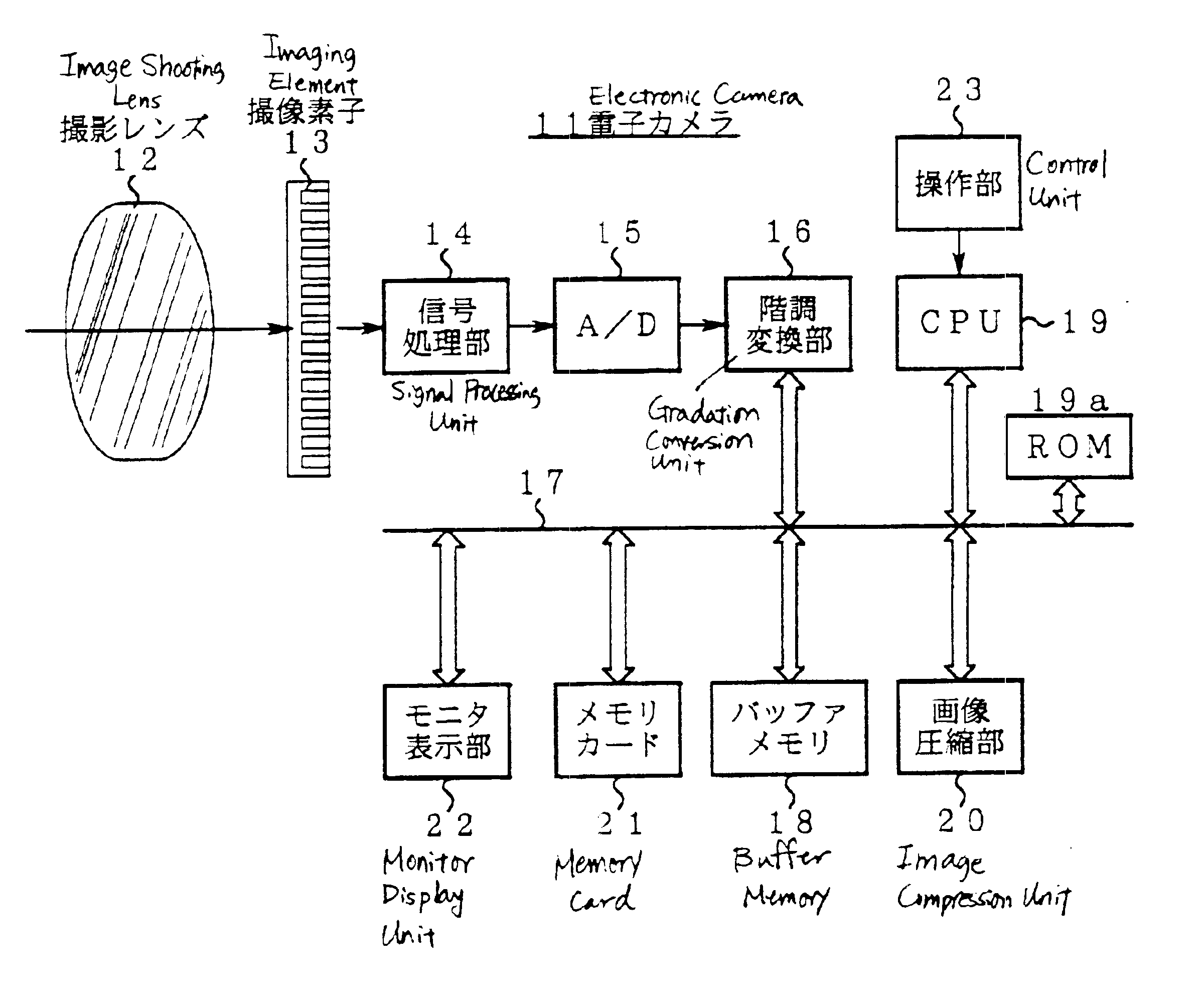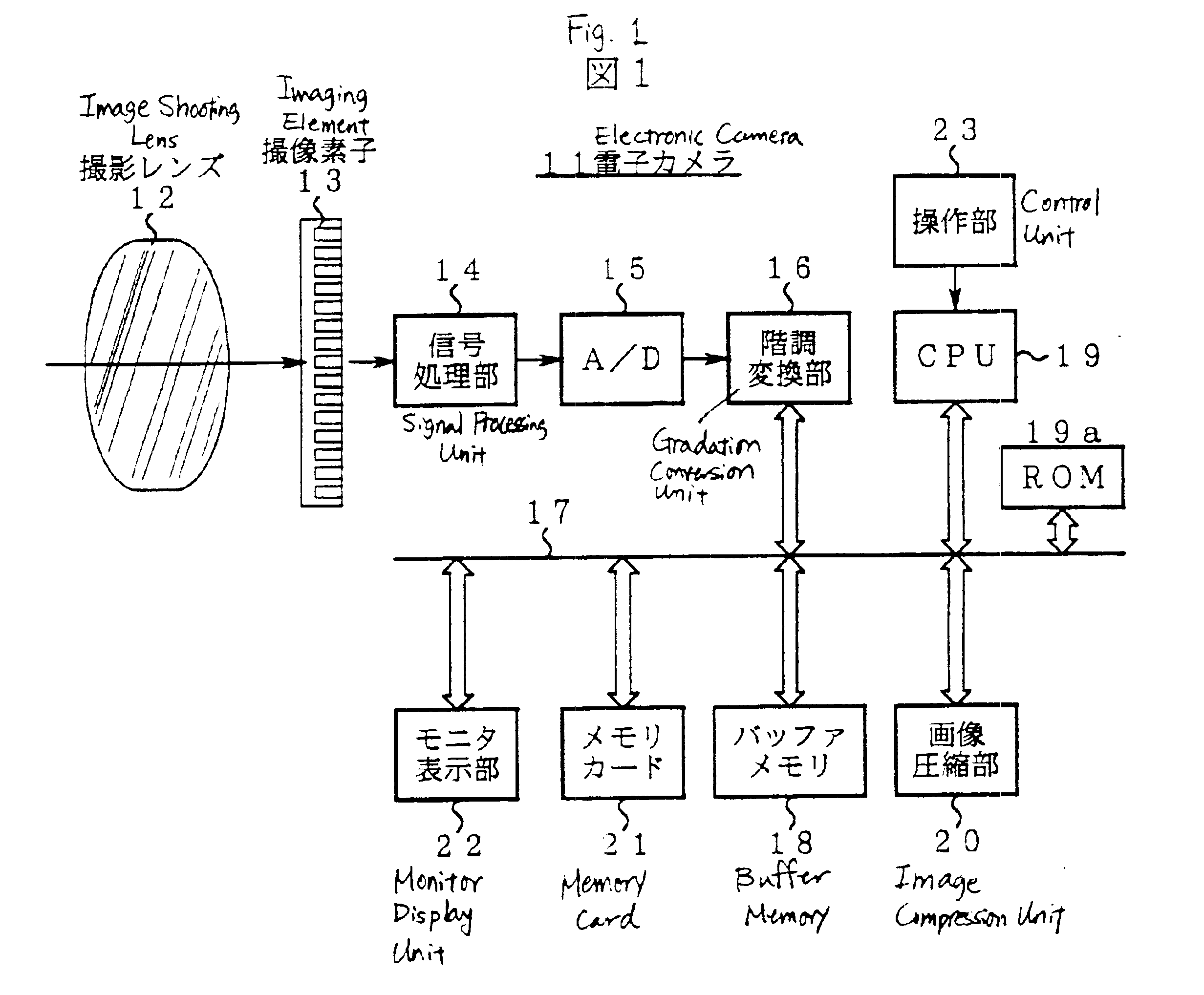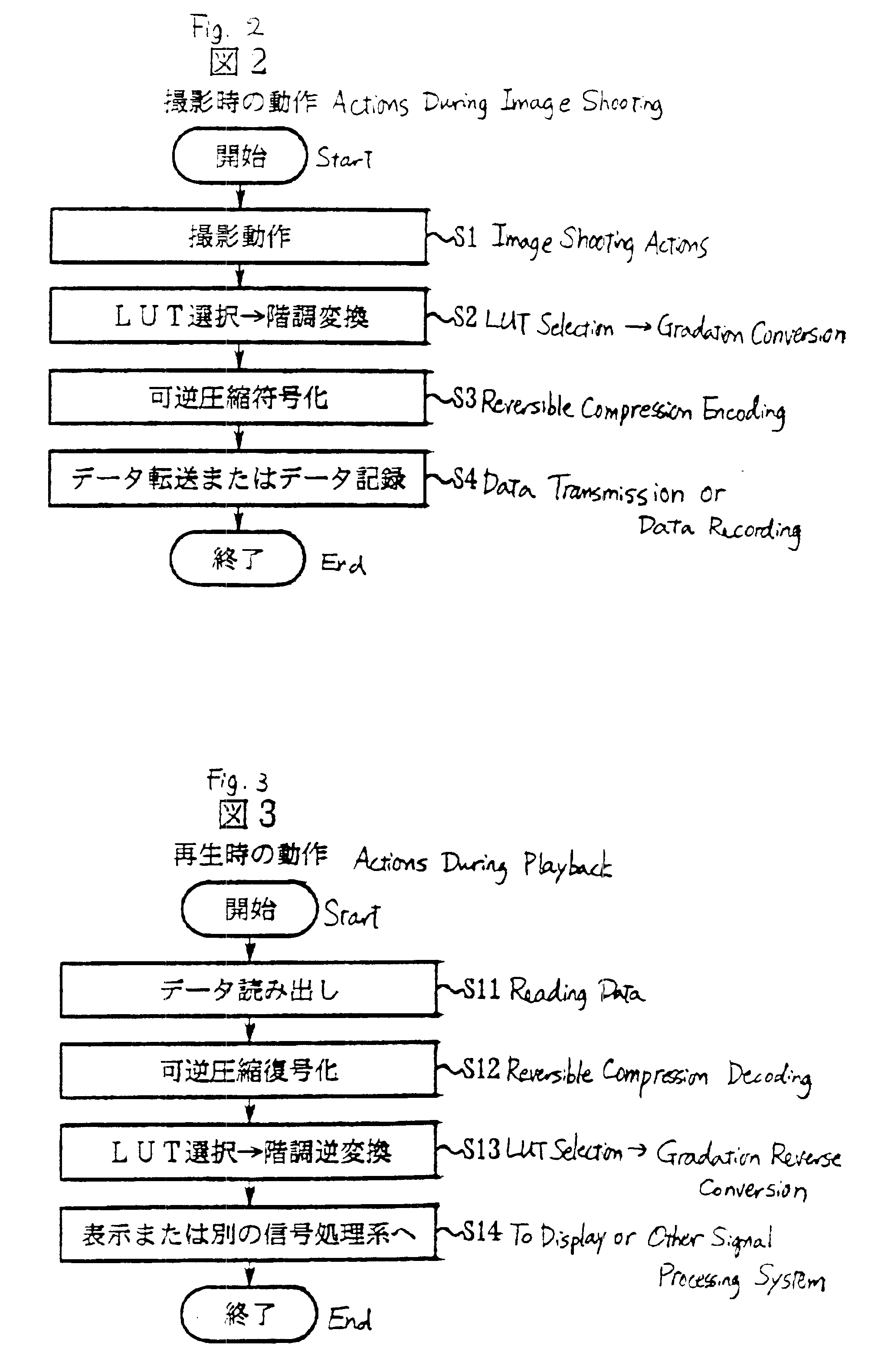Electronic camera for performing gradation conversion on an image signal
a technology of image signal and gradation conversion, applied in the field of electronic cameras, can solve the problems of easy loss of rich gradation sense and increase of gradation, and achieve the effect of effective reduction of unnecessary information and good image quality
- Summary
- Abstract
- Description
- Claims
- Application Information
AI Technical Summary
Benefits of technology
Problems solved by technology
Method used
Image
Examples
first embodiment
[0045]FIG. 1 is a block diagram showing the composition of an electronic camera 11.
[0046]FIG. 2 is a flowchart explaining the image shooting action of the electronic camera 11.
[0047]FIG. 3 is a flowchart explaining the playback action of the electronic camera 11.
[0048]First, the image shooting action of an electronic camera 11 will be described with reference to FIG. 1 and FIG. 2. An image shooting lens 12 is mounted in the electronic camera 11. An image of the object is formed on the imaging surface of the imaging element 13 by this photographic lens 12. This imaging element 13 generates an image signal by photoelectrically converting the object image in accordance with the release operation or the like (S1 in FIG. 2).
[0049]After executing a black level clamp process or the like via a signal processing unit 14, the image signal is digitally converted to 12-bit raw data for each color by an A / D converter 15.
[0050]Based on operational information of an operation unit 23, a CPU 19 sel...
second embodiment
[0083]The structure of the electronic camera of the second embodiment is the same as that of the first embodiment (FIG. 1), and hence description of such is omitted.
[0084]The feature points in the action of the second embodiment are as follows:
(1) A plurality of LUTs (gradation conversion characteristics) are stored in advance in the ROM 19a;
(2) The image compression unit 20 can select whether or not to perform reversible compression; and
[0085](3) The CPU 19, in accordance with the user setting of the compression mode input from the control unit 23, decides “selection of whether or not to perform a gradation conversion characteristic”, “selection of a LUT when gradation conversion is to be performed”, and “selection of whether or not to perform reversible compression,” and controls storing process of the raw data.
[0086]Below, the feature points for each compression mode provided in the electronic camera 11 are described.
Non-Compression Mode (Corresponding to the Non-Compression Mod...
PUM
| Property | Measurement | Unit |
|---|---|---|
| compression ratio | aaaaa | aaaaa |
| compression ratio | aaaaa | aaaaa |
| compression ratio | aaaaa | aaaaa |
Abstract
Description
Claims
Application Information
 Login to View More
Login to View More - R&D
- Intellectual Property
- Life Sciences
- Materials
- Tech Scout
- Unparalleled Data Quality
- Higher Quality Content
- 60% Fewer Hallucinations
Browse by: Latest US Patents, China's latest patents, Technical Efficacy Thesaurus, Application Domain, Technology Topic, Popular Technical Reports.
© 2025 PatSnap. All rights reserved.Legal|Privacy policy|Modern Slavery Act Transparency Statement|Sitemap|About US| Contact US: help@patsnap.com



